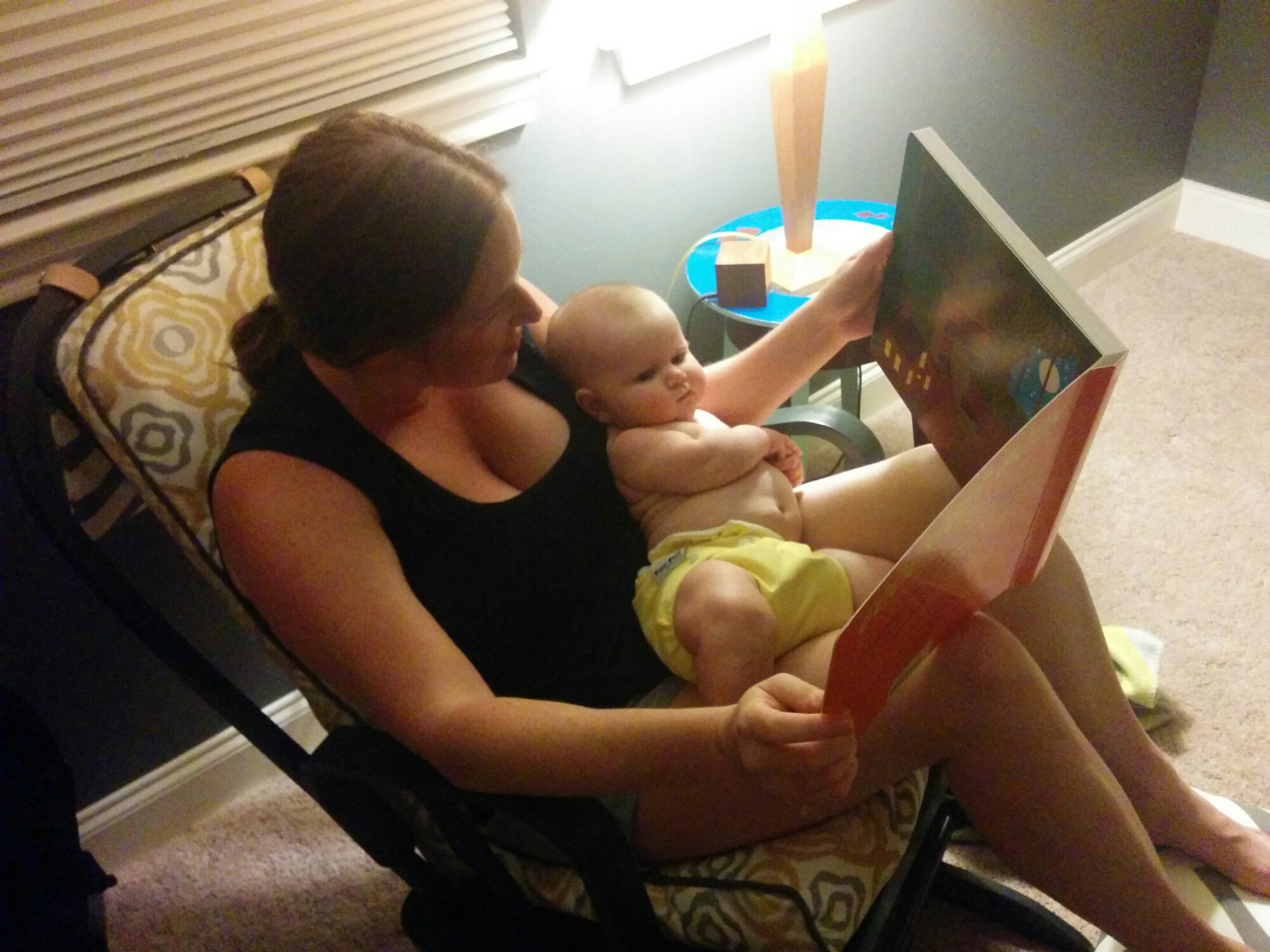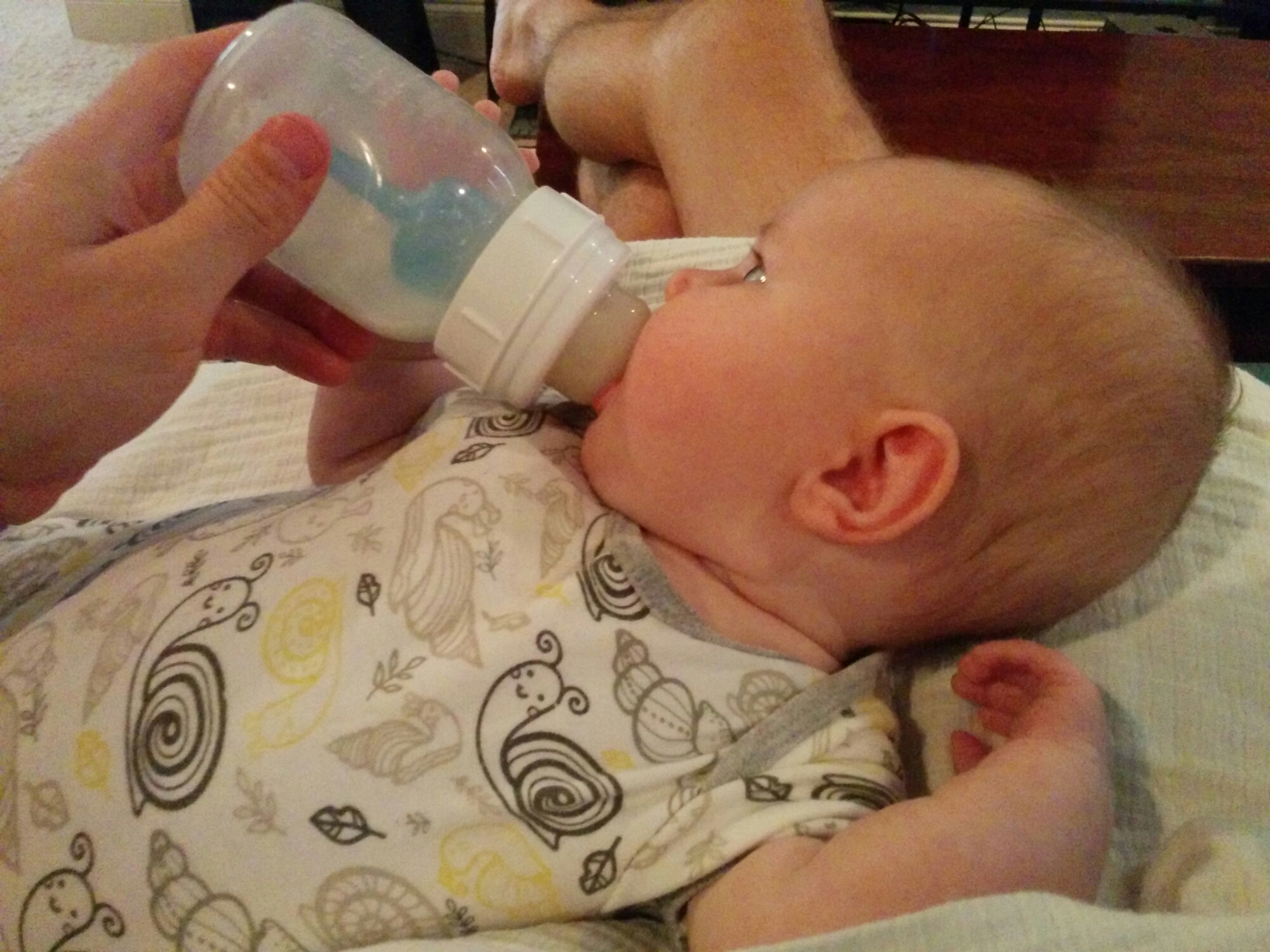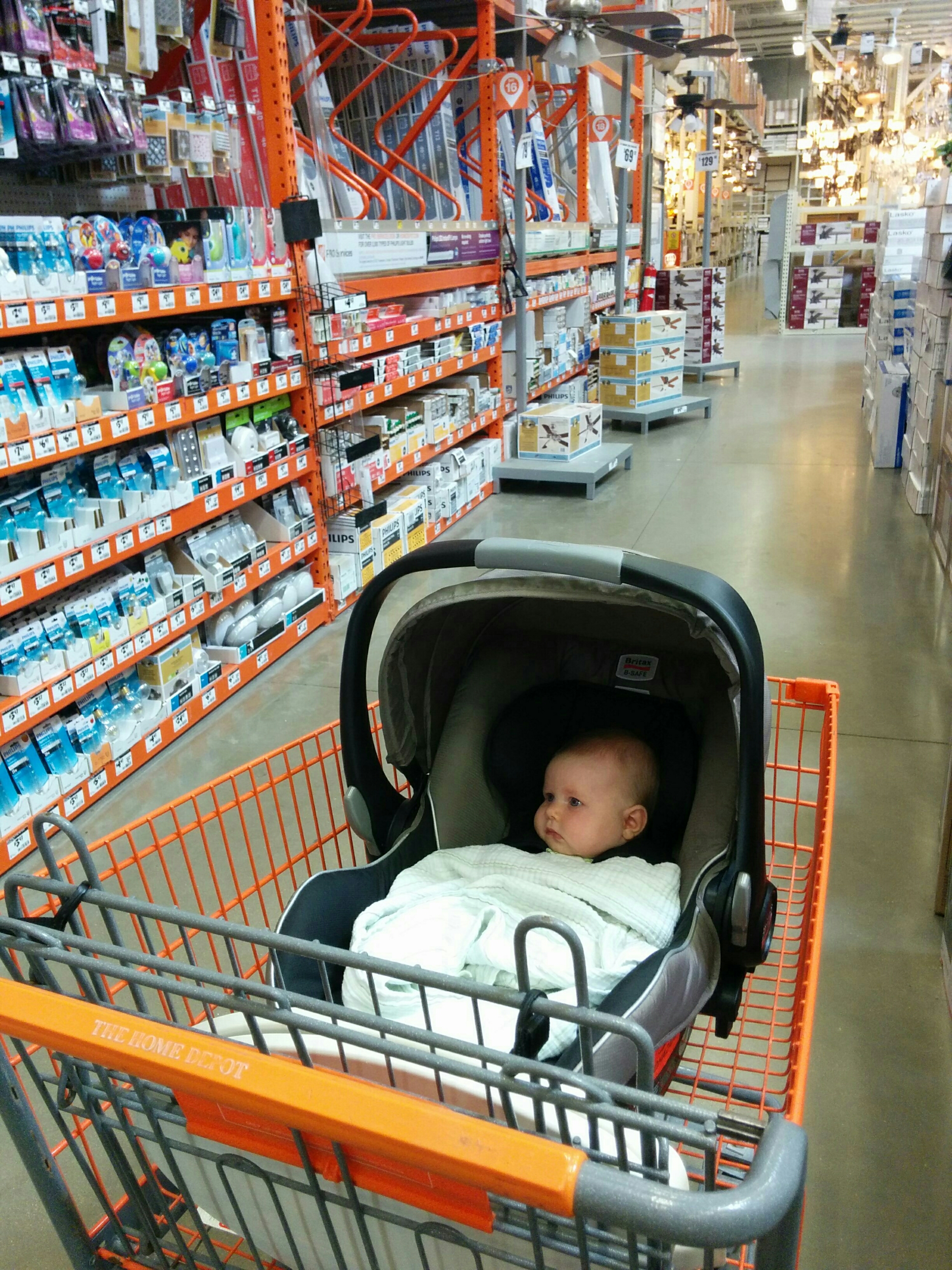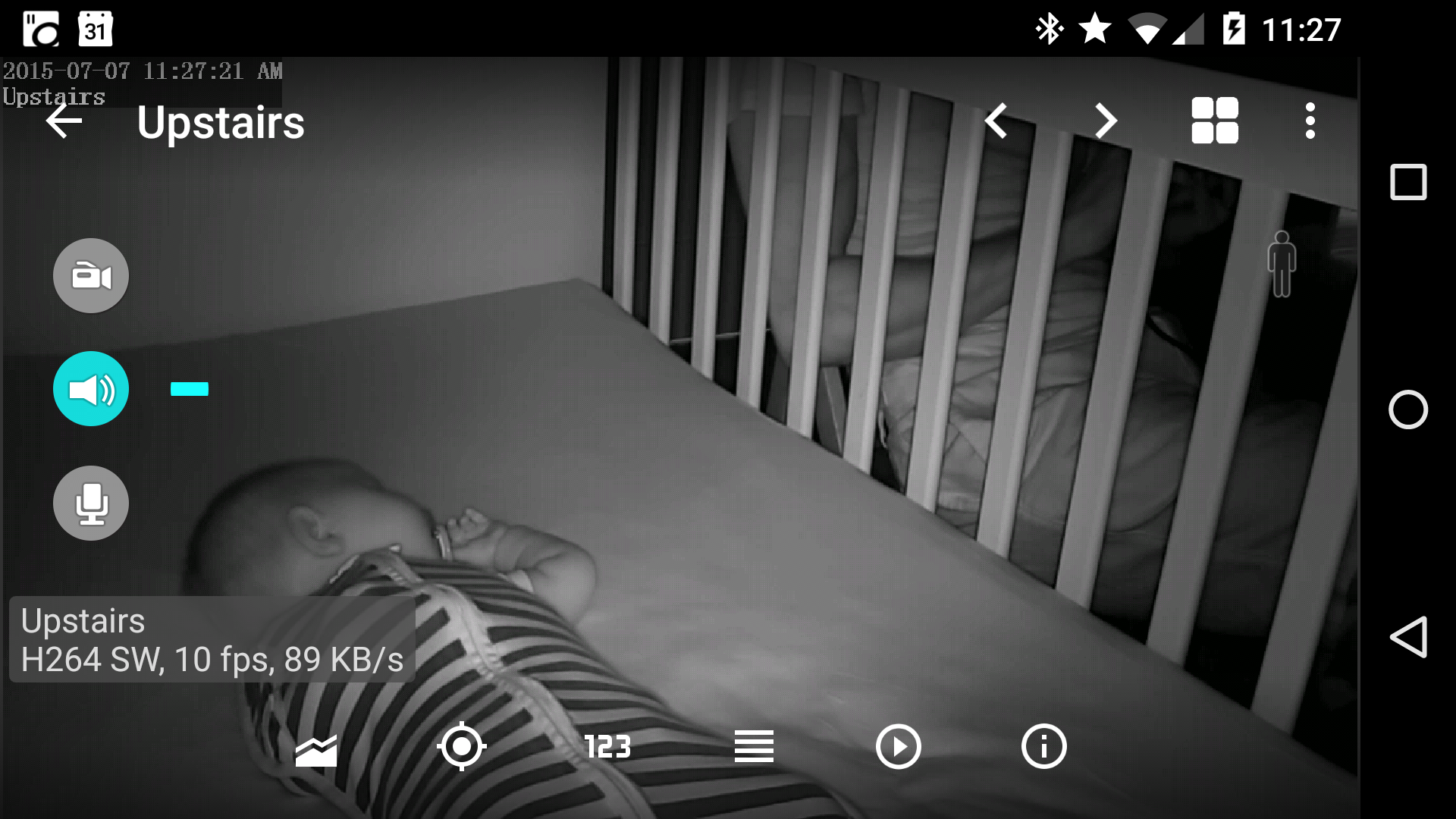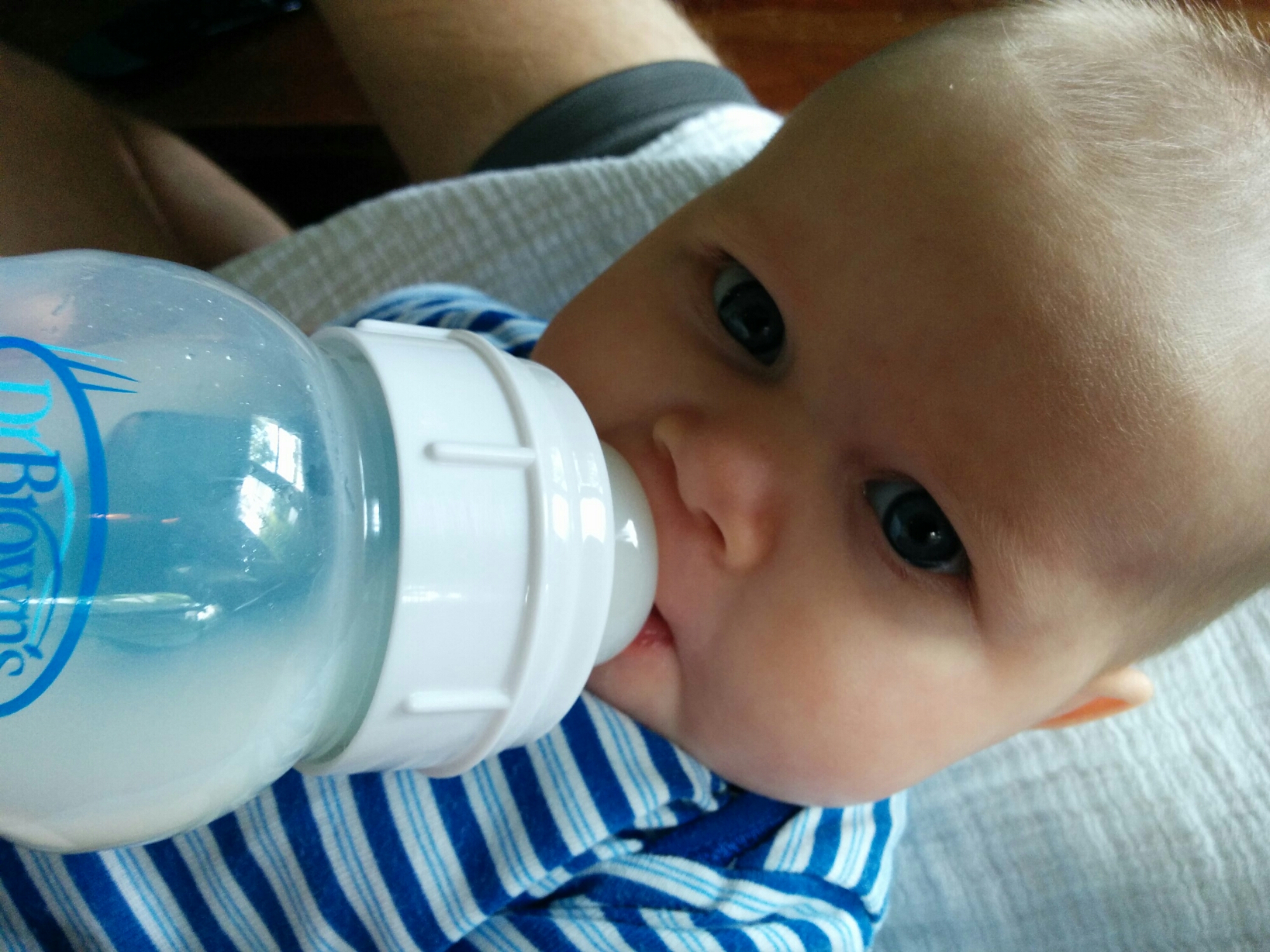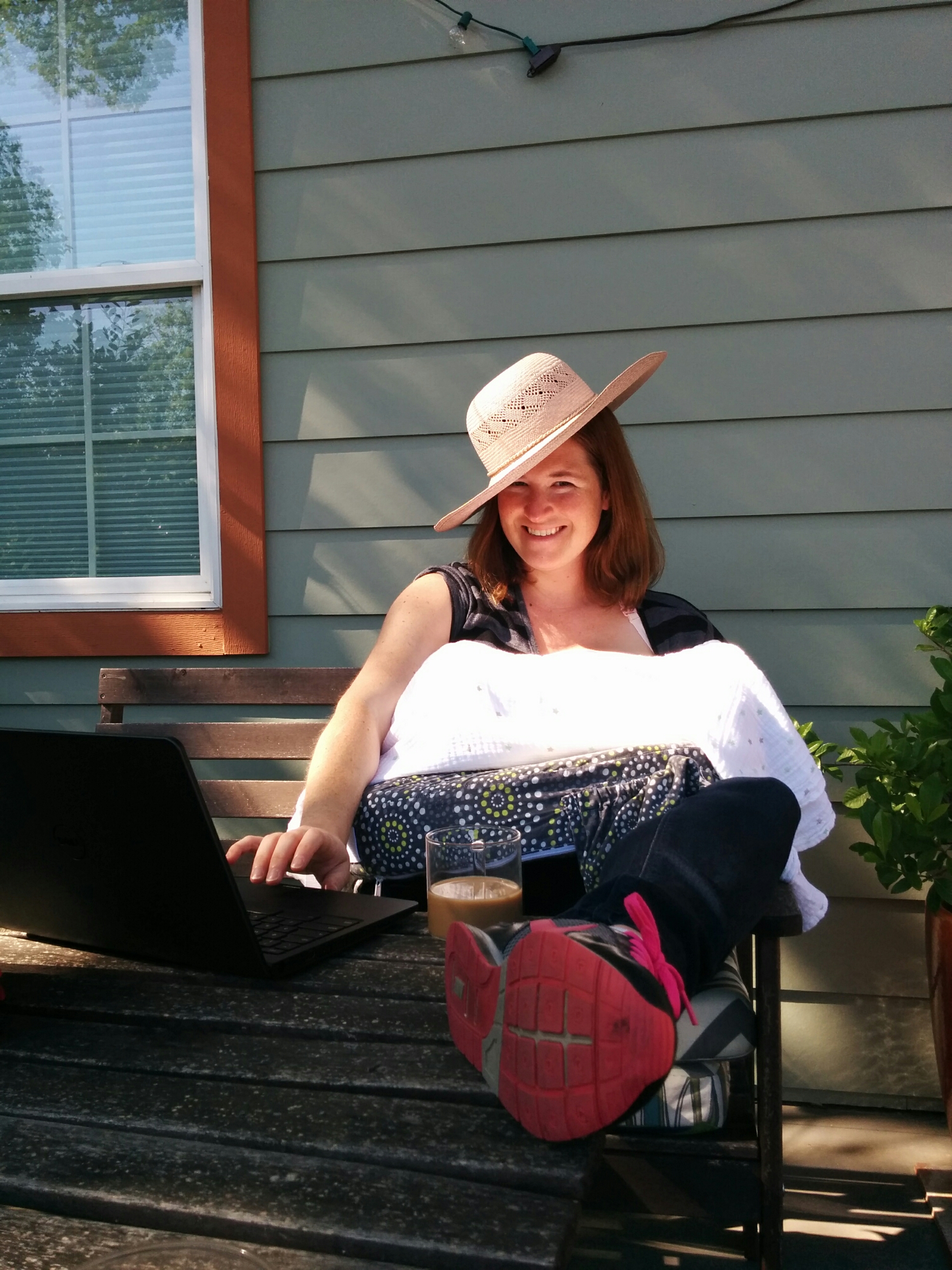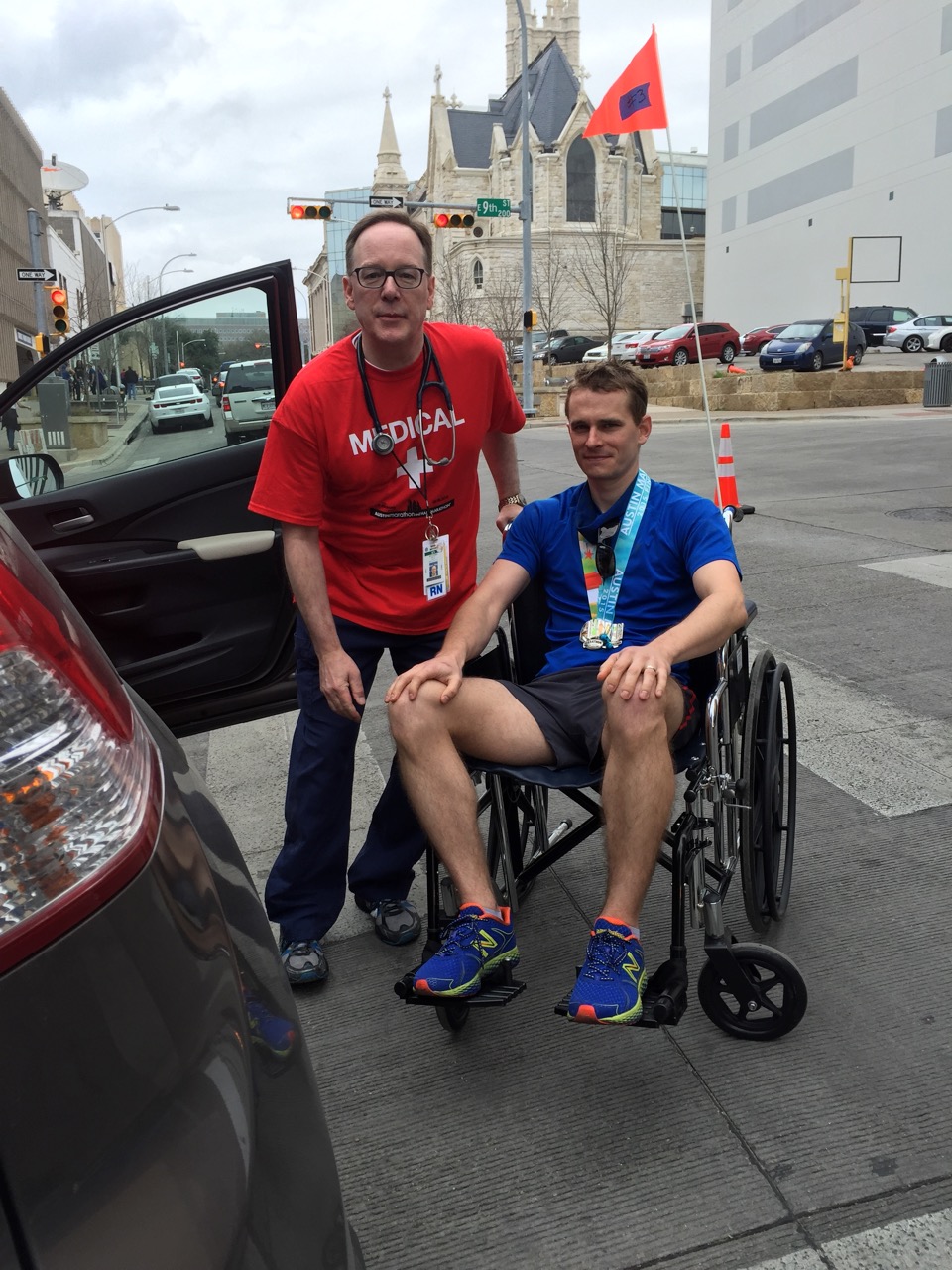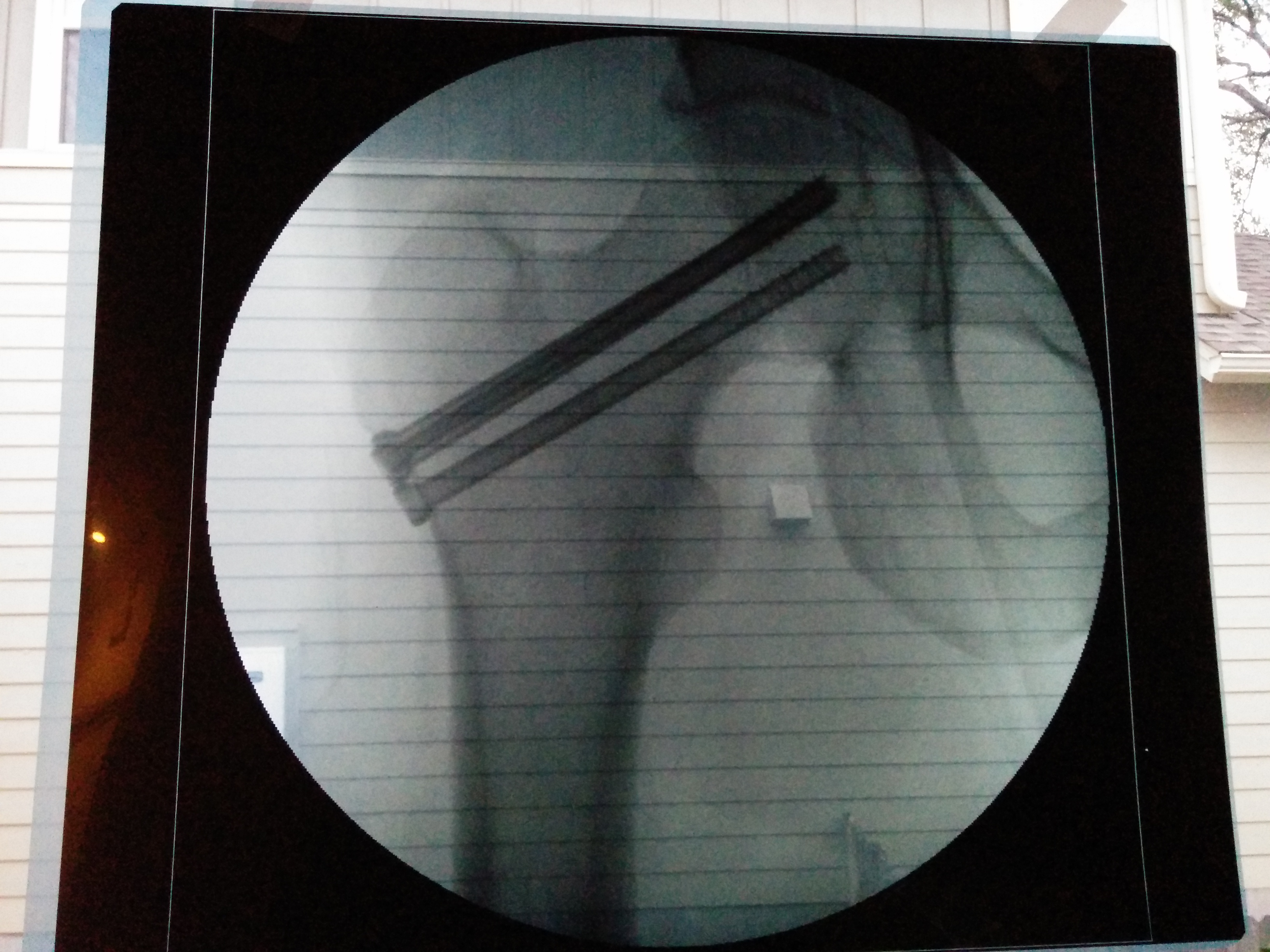So apparently it’s a good thing to let your infant learn about touch by exploring your face. So, I have let her claw at my mouth for the last 15 minutes. Harvard, look out!
Author: Bryan
mom takes the reins at the of the day
caesar-like in her repose
hardware store helper
puppy training
I always secretly thought that early parenting was not dissimilar from dog training. Now that I have a human puppy of my own, I’m free to experiment with the techniques that worked well on Sous.
One of the core ideas in dog training is generalization: you first teach them a behavior in a very specific context, and then you generalize it. First, teach them to stay in the quiet of the kitchen, then the back yard, then the dog park, with the hope that one day you could yell “stay!” from the opposite side of a busy street and have them obey.
We’ve trained Annie to sleep well when swaddled–basically, with her arms pinned so she won’t swing her arms around and hit herself in the face. But, it would be nice if she didn’t need the swaddle to have a good nap. So, I’ve started to let just one arm out at a time during naps. First, it only worked for 45 minutes. Then, this morning, she had an arm out for the whole nap. A couple more days of this and I’ll have her napping without the straightjacket. Then, I guess, she should learn to nap while riding on Sous?
it begins
porch time
the future of the baby monitor is now
Things are going great here in new dad land. We’re total experts now with eight days of parenting under our belt; we have sorted out everything up to the tearful goodbye as she leaves for Harvard.
One side-effect of being off work is that I’m overflowing with undirected nerd energy. I knew that eventually we’d want a baby monitor of some sort (although at the moment Anne sleeps right next to our bed in a bassinet). I also knew that cheap, high-quality, internet-connected surveillance cameras have become widely available over the last decade, so I decided to do some recreational research on their application as baby monitors.
One obvious choice for this is the super-slick Dropcam, the iPhone of IP cameras (recently acquired by Nest), with it’s beautiful industrial design, slick website/app and overall turn-key experience.
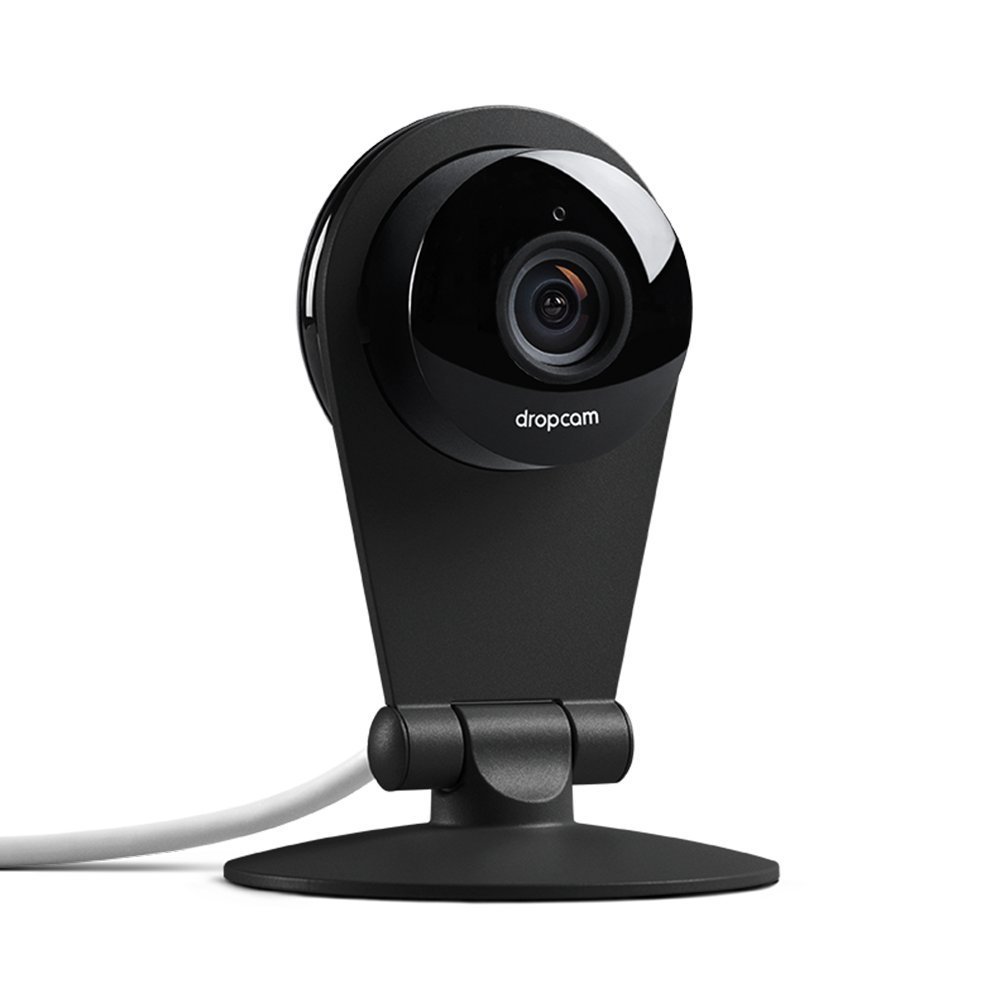
No doubt this is a high-quality camera, and probably the right choice for many who are not technophiles and just want to buy a camera and be done with it. However, I see several downsides of Dropcam:
- It’s expensive. $200 to buy the hardware.
- It requires an ongoing subscription ($100-$300/year) to use “cloud recording” and remote (via Phone app or web).
- It does not pan or tilt–it points in precisely one direction.
- There’s a considerable delay (3-30 seconds, depending on the method of access) in the video and audio stream.
For me, 4 is the deal-breaker for a baby monitor application, where I would rather know the baby is crying before 30 seconds have elapsed.
Instead of Dropcam, I decided to go with it’s chief competitor in the market: Foscam. In many ways, Foscam is Dropcam’s opposite: instead of a single slickly packaged and marketed piece of hardware with an integrated software ecosystem, Foscam offers a dizzying array of poorly differentiated IP camera products with much less appealing packaging. It requires more effort and knowledge to set up. Overall, it has the feel of a hardware manufacturer with a strong product skipping over candy-coating and marketing directly to savvy consumers. I quickly surmised from its 2000+ Amazon reviews that the most popular current Foscam model is catchily named FI9821W.
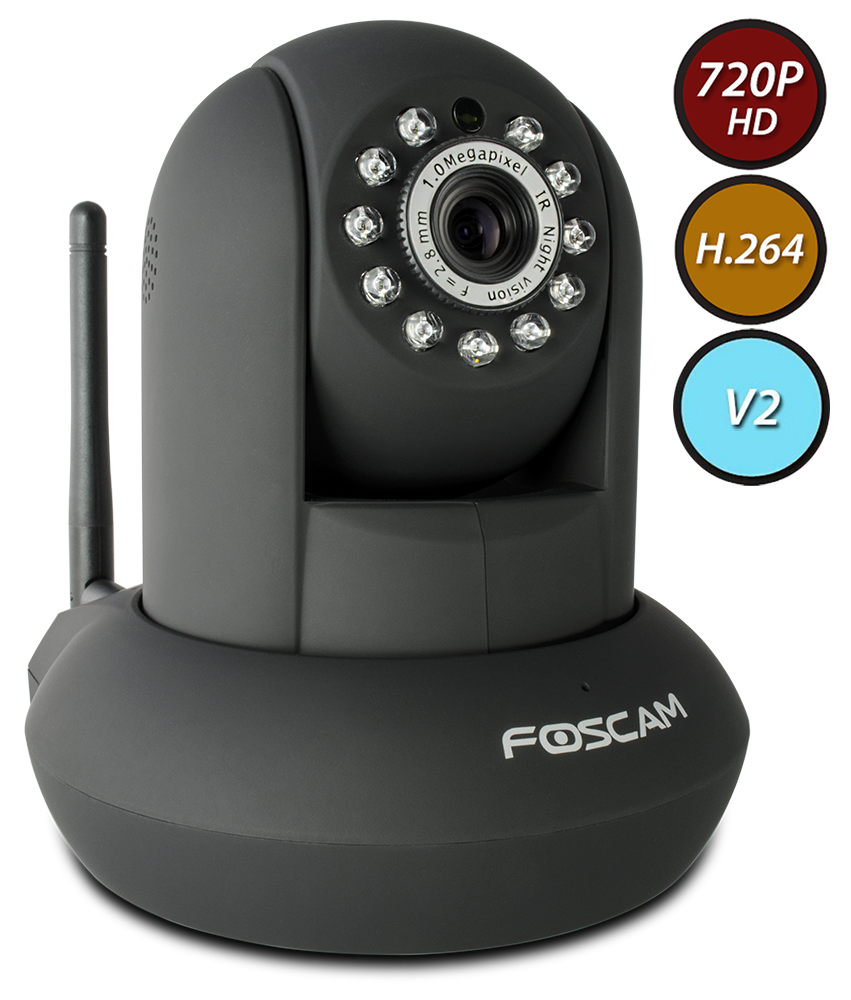
This camera is so popular, in fact, that it was available through the new “Amazon Now” instant delivery service in Austin; I ordered and had it delivered to my door, for free, on a Saturday, in two hours. I love living in the future. Here are its strong points:
- Cheap. $75 from Amazon.
- No subscription fees for accessing over the internet.
- Motorized, remote-control pan/tilt.
- Robust software ecosystem, including the excellent Tinycam Monitor Pro.
I set up this camera while soothing Anne to sleep, which is either a testament to new-dad multitasking resourcefulness, it’s relative ease-of-use, or both. Now, I’m sure the setup was harder than it would have been with the Dropcam, but I am not afraid of my wireless router and have a pretty good understanding of how the internet works. I got it on my wireless network, then forwarded its HTTPS port through my firewall so it was accessible from the internet, installed Tinycam Pro on my phone, and voila, I was connected.
Here’s the current setup: eye of Sauron gazes upon baby Anne:
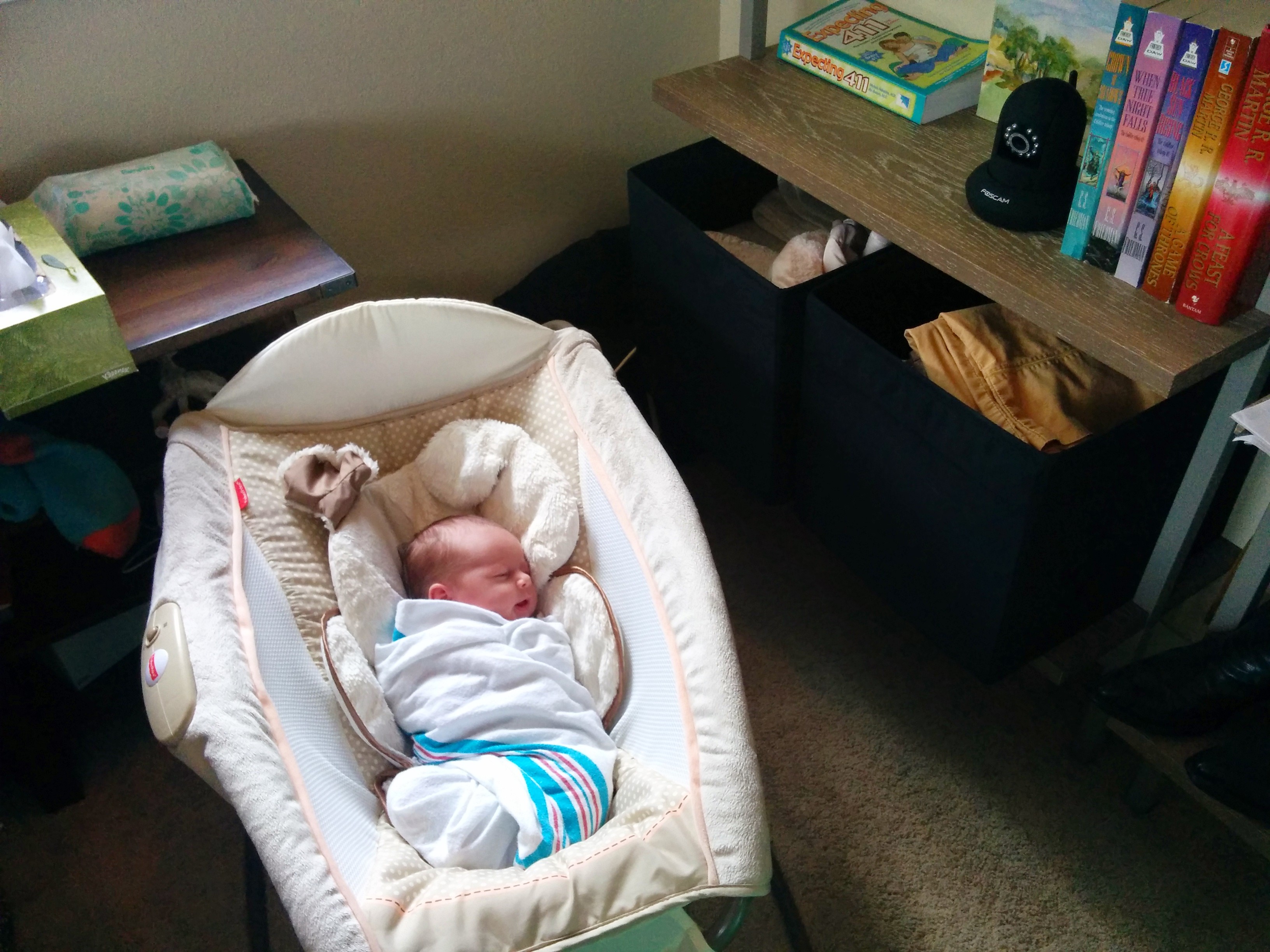
And here’s what I see in the Tinycam app on my phone:
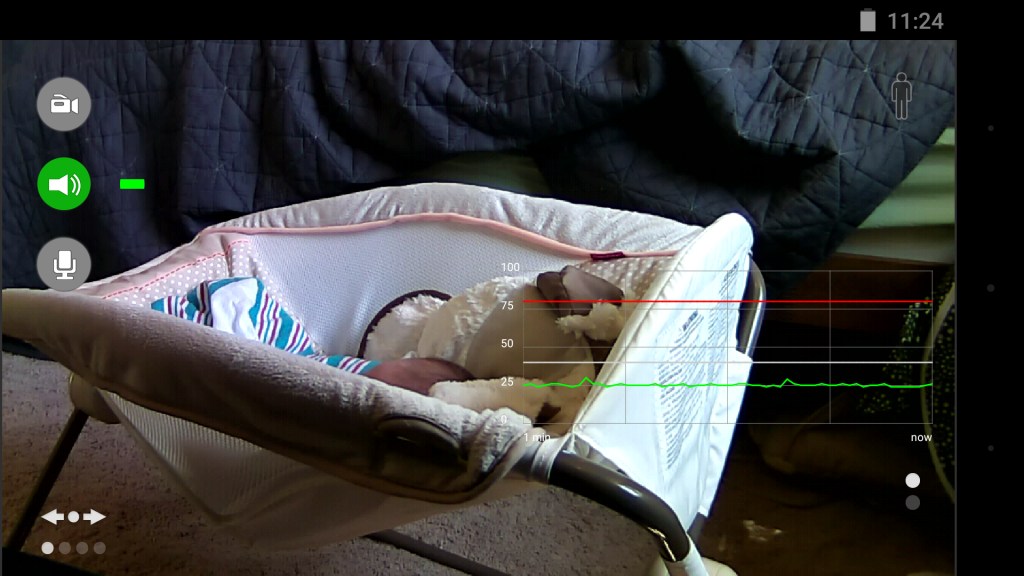
You’ve got high-quality, high-frame-rate video of all the exciting nap action. In the upper left, you see buttons to initiate recording (which can be saved to Google Drive or Dropbox). You have a live audio feed. You have a button to send your voice from the phone to the camera. The graph in the lower right shows the sound level over time plotted as a green line. The white line is the ‘squelch’; if audio is below this level, your phone mutes it. The red line is the ‘alarm’ level; if the audio reaches this, a tone sounds and the phone vibrates. It is also configured to alert if it senses excessive motion in the video feed.
My geek heart sings with joy. I can pull out my phone from anywhere: downstairs, at the grocery store, across the country, and get the full data dump on the nap. I can automatically record video based on any motion alerts and review it later. All for $75 + $4 for the app!
i’m a dad!
On Friday, 10 April Leslie gave birth to a healthy baby girl: Anne Hazel Hall. Stats everyone seems to include with this news: 8 lbs on the nose, 21-ish inches long. Mom is doing great.
We just got home from the hospital yesterday, and I’m sneaking in this post while she sleeps. Amazing stuff! Need sleep.

ran marathon, broke hip.
About a month ago, after six months of training and what I thought was a heroic recovery from a stress reaction in my right femur, I ran the Austin Marathon:
You may notice that things get really slow for the last four miles or so. Here’s the deal with that.
I hadn’t run much in the six weeks before the marathon, because I had a persistent pain in my right hip. It was diagnosed via MRI as a “stress reaction,” where the bone marrow swells due to stress on the bone. It’s a precursor to a fracture. I took three weeks off running, and worked with a physical therapist to rehabilitate the hip. I spent hours and hours simulating long training runs on an elliptical strider (do not try this). I did low-body-weight runs on an AlterG, a wacky device that supports your weight on a bubble of air while you run on a treadmill.
In the days leading up to the race, I was cleared to run by my physical therapist. I had some pain in my hip, but it wasn’t like the bone pain I’d had before the diagnosis, so I chalked it up to soft tissue. I was worried that I wouldn’t make it far, but I wanted to start the race on principle, since I’d trained so long for it.
Things started out better than I could have hoped. I had only a little bit of manageable pain in the hip one mile in. I felt strong. I made it 5 miles in, and crossed the river. I tried not to get too excited. I made to the 11 mile mark where the marathon / half marathon split was, and I took the marathon route. I couldn’t believe my luck! By mile 17, I was starting to hurt more. Walking was more painful than running, but as long as I could get moving after water stops, I was okay. Someone who saw me around mile 17 reported that I was running pretty funny, but I didn’t notice it. I was elated that I might finish.
At mile 22, there was a quick increase in pain in my right hip. I tried to take another stride, but I couldn’t. I was sure I had pulled a muscle or ligament or something. The bone was healed, after all.
I started limping along at a slow walking speed, determined to finish. I knew I’d be laid up on the couch for a day or two recovering from whatever I’d pulled, but, I told myself, it was worth it. A good friend who was running with me caught up a couple of miles into my ridiculous limp and offered to walk with me the rest of the way (he has several marathons under his belt). Boy, it was lucky that he did. We made the rest of the way, somehow, and I walked across the finish line on my hands (haha, what a joker!). Then he steered me into the medical tent, you know, just to be sure I was okay. Here I am 100 yards or so from the finish:
After I was examined and nothing serious found, I realized that I couldn’t really walk. So, I asked for some crutches to get back to the car. I crutched over to my poor pregnant wife who was waiting for me, and the pain in my leg was pretty extreme. We decided to head to the hospital, you know, just to be extra careful in case there was a fracture.
An hour later, exhausted and sweaty on a bed in the ER, I learned that I’d fractured my femur. The break was bad but not complete–it went halfway through the neck of the femur. If the fracture had gone all the way through, I would have needed a total hip replacement. As it stood, I likely needed surgery to insert screws in the femur to stabilize the fracture so I did not get worse. They offered to prep me for surgery right there, but I was exhausted, hungry, and a bit distraught at the idea of having screws permanently put in my body. So we went home to think about it.
It took about 24 more hours of internet research on femoral neck fractures to conclude that surgery was the right choice. If I didn’t get it, there was a chance that a fall at home could complete the fracture, leading to hip replacement, a terrible outcome. The screws reportedly did not have any lasting limitations. So I waited five days for the next available surgery appointment, leg hurting excruciatingly whenever it got bumped or moved the wrong way.
The surgery was quick and easy. I was told I would probably be admitted, unless I was feeling okay after the surgery in which case I could go home the next day. We showed up at 5am for the 7am surgery, Leslie bizarrely watching me get rolled away to the OR in a last minute role reversal. I was awake again 45 minutes later and the surgeon said everything had gone fine. I stepped off the bed with crutches and immediately could put weight on the leg. I was so relieved. I got to go home with some awesome X-rays of my new titanium-enhanced leg:
A month after the marathon, I’m still on crutches, but only because of doctor’s orders. I have almost no pain any more moving around. I’m getting exercise by swimming. I’d say I’m doing better than my very pregnant wife at this point. The doctor said I can ditch the crutches as soon as the baby is born 🙂

